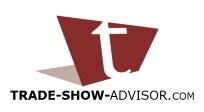International Trade Fairs
Part Two – Click Here for Part One
Participating in international trade fairs offer significant opportunities for making key contacts, determining receptivity of a product in other countries; and gaining exposure to potential vendors, in-country distributors, and end-users before making a substantial financial investment to conduct foreign trade.
The information provided below focuses on cultural, communications and sales strategies to help ensure successful outcomes from global event participation. These tips for exhibiting at international trade fairs are provided by tradeshow expert Susan Friedmann.
Keep language simple.
Many international business contacts will speak English. Problems occur when you use slang, colloquialisms, idioms, jargon, buzz words, lingo, acronyms, and metaphors.
These are often difficult to translate. It is far more effective to keep communication, written and verbal, basic and easy for anyone to understand.
Learn to interpret body language.
Seventy percent of communication is nonverbal. We communicate by the way we stand, sit, tense facial muscles, tap fingers, etc. There are also hundreds of gestures to get across almost any meaning -- from greetings and farewells to terms of endearment and insults.
Gestures and body language, with the exception of smiling, are not universal in meaning. Be aware of the etiquette on personal space, eye contact and when, what and how to touch.
Make sure your top executives are available.
International shows are serious business and top-level management from other countries attend expecting to place orders. They want to deal with their counterparts in your company. Prepare your company’s leadership to plan on spending time discussing technical details of your product with high-level prospects and closing major deals on the show floor.
Finesse negotiating.
Negotiating in international business is extremely complex. Socializing is often considered essential to the negotiating process. Learn the cultural rules, especially as they relate to timing and how business is conducted. Patience is often a real virtue.
Plan on having a third-party contact.
In some countries, it is the culture to conduct business with people you know. Meeting the right people often depends on having the right introduction. If the person you wish to meet respects your intermediary, then chances are you too will be respected.
Question whether "no" really means "no."
Much confusion, frustration and irritation can occur when different cultures communicate real meaning. In some countries, "no" can often mean "maybe’ and "maybe" can mean "no." Or, a "yes" or a nod of the head may very well mean "maybe" or "I understand," instead of it being the affirmative response you might interpret.
Learn to listen to the subtleties by asking open-ended questions. It is at times like these that a cultural mentor can be particularly helpful.
Recognize the role of women in business.
Research the customs of the country you are visiting, as they apply to women. Familiarize yourself with local and regional attitudes and cultural differences about women in business. This will help to define your approach and avoid potential problems during international trade fairs.
Be prepared to prove yourself since you may not be taken as seriously as your male counterparts. However, business overseas is based on trust and relationships. And women, like men, are responsible for creating the necessary rapport to accomplish their goals.
Supply all your company team with bi-lingual business cards.
Business cards are essential and act like a business passport. For countries where English is not widely spoken, have cards printed on the reverse side in the local language. This is best done in the country you are visiting.
Also be aware of the specific etiquette that exists, particularly in Asian countries, for presenting cards. As an example, in Japan, business cards are exchanged ceremoniously using both hands and a bow. Both parties will read and study the card. It is extremely impolite to write notes on the card or shove it in your pocket.
Watch out for cultural differences.
Know and understand the cultural differences of the people with whom you will interact. Be sensitive to color and symbols and their meanings in different countries. For instance, mourning is symbolized by white in Asia, purple in Brazil and yellow in Mexico.
If your product, packaging and literature are in the wrong color, you will lose sales. Red and yellow are lucky colors in China — conversely, never use red printing in South Korea.
In many of the Asian countries, the number four denotes death and should be totally avoided, including products packaged in fours. If possible, avoid the number nine when exhibiting at international trade fairs, as it has connotations of suffering. Seven and eight are considered lucky. Be safe and always do your research.
Follow-up personally.
As always, personal contact and immediate follow-up after international trade fairs is the best way to establish strong buyer/seller relationships that produce future orders.
Yield to a time investment.
Building relationships is a key component to doing business overseas. Behavioral differences are real. It is wise to recognize them and to make allowances when doing business.
Willingness to cultivate business contacts through personal visits plays a major role in export success. Plan regular trips to see major buyers, agents, or distributors. Be available, interested and quick to react to problems or complaints.
For more exhibiting strategies for participating in international trade fairs, click here to read Part One of this article.
Related Information - International Trade Fairs
More on International Trade Fairs
Share Success Tips Do you have a great exhibiting or marketing tip that enhanced
your trade show results? Share it here! |



